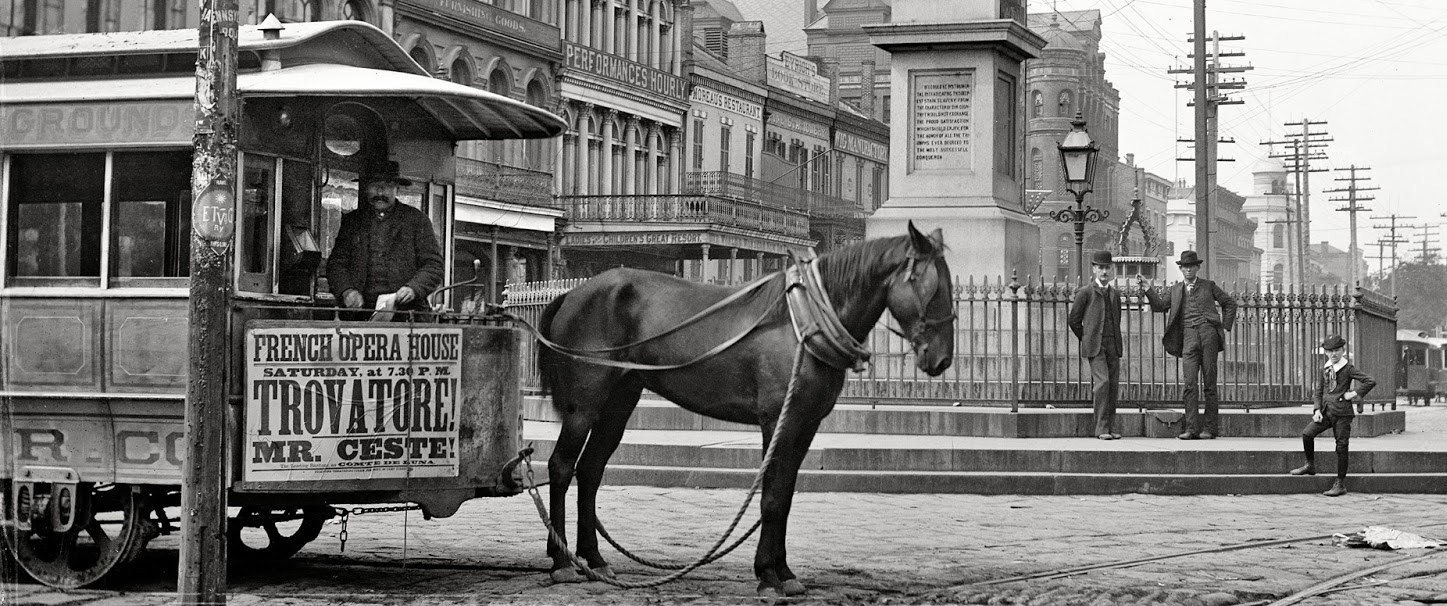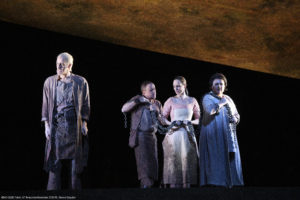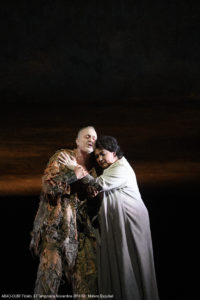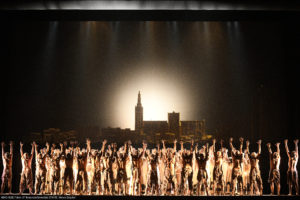A certain enterprising culture manager and former director of several leading opera houses in Poland went on a trip to Bilbao, after which he contended that there is no opera there. At least that is the conclusion to be drawn from his column of four years ago, in which he did not resist the temptation to make biting comments about a certain director who happened to succeed the author in one of his more important director’s posts. The columnist marched off to the Teatro Arriaga, found some ‘dramas, comedies, musicals, operettas and zarzuelas’ in the repertoire, but as far as operas were concerned, spotted only two unfamiliar titles. The problem is that the gorgeous Neo-Baroque building on the banks of the Nervión River was never a real opera house to begin with. The heart of opera in Bilbao beats somewhere completely different. The columnist’s hated competitor has collaborated with the local ABAO-OLBE association and directed at least three productions in the capital of Vizkaya province, among them Szymanowski’s King Roger with Mariusz Kwiecień in the title role and Łukasz Borowicz on the conductor’s podium.The existence of all of the aforementioned parties cannot be denied; neither can that of Artur Ruciński, who sang the role of Marcello in La Bohème no more than a month ago – and this was by no means his first performance in Bilbao.
It all began in 1953, when four opera enthusiasts – José Luis de la Rica, Guillermo Videgain, José Antonio Lipperheide and Juan Elúa – formulated the statute of the Asociación Bilbaína de Amigos de la Ópera and went out into the world to find performers for their first post-war season. The program included five titles (Tosca, Aida, Rigoletto, Il Trovatore and La Favorite), under the baton of Giuseppe Podestá and with casts comprised mostly of soloists from La Scala Milan. The festivals took place annually until 1989. The shows were accompanied by recitals of true stars: Maria Callas herself performed on 17 September 1959 with the orchestra of the Gran Teatre del Liceu. In 1990, the association opened its first opera season, comprised of six productions – among others, Stefania Toczyska and Alfredo Kraus shone as Léonor and Fernand, respectively, in a revival of La Favorite. Until 1999, the Bilbao Opera was headquartered at the Coliseo Albia theatre, which presently houses an elegant restaurant and a casino. A year later, the shows were moved to the brand new Palacio Euskalduna, built according to a design by Federico Soriano and Dolores Palacios – the reddish steel construction in the shape of a grounded ship was erected in the place of the former shipyard, not far from the famous Guggenheim Museum. The palace boasts the largest opera stage in Europe – over 600 m2 larger than the supposed record-holder, namely Warsaw’s Teatr Wielki – Polish National Opera. The ABAO-OLBE association gives a total of about 50 shows per season; for over ten years now, it has had no debt, and over half of the financing for its productions comes from own coffers. As far as performance quality is concerned, critical opinion places it among the top three opera houses in Spain, alongside the Teatro Real and the Gran Teatre del Liceu. Let us add that over 20 opera ensembles are active in the country.
Tiji Faveyts (Rocco), Mikeldi Atxalandabaso (Jaquino), Anett Fritsch (Marzelline), and Elena Pankratova (Leonore). Photo: E. Moreno Esquibel
And so, in the course of 60-odd years, they accumulated 999 shows. ABAO management decided to celebrate their 1000th night at the opera with a staging of Fidelio, Beethoven’s only opera, about which I once wrote that it had de facto three premières, four overtures and two titles, but even so, the composer was not satisfied with its successive corrections and revisions. This peculiar and, in many musicologists’ opinion, internally broken masterpiece gained new life after World War II. Considered (not entirely rightly) as a universal apotheosis of peace, freedom and marital love, it was heard already in September 1945 on the stage of Berlin’s Theater des Westens – the only house to survive the wartime turmoil. Ten years later, Karl Böhm re-inaugurated the Wiener Staatsoper’s operations with a production of Fidelio. In 1989, just before the fall of the Berlin Wall, the audience of a new staging in Dresden received the prisoners’ chorus with applause that, at each successive showing, began increasingly to resemble a political demonstration. The première in Bilbao – the largest city in the land of the Basques, a people without a country – was set for the day before the International Day for the Elimination of Violence Against Women. A year previously, the stage of the Palacio Euskalduna had hosted a production from the Teatro de la Maestranza in Seville, with stage direction by José Carlos Plaza and stage design by Francisco Leal. I arrived in time for the next, 1001st show.
Plaza and Leal have been collaborating with each other for years – in 2000, they created a riveting vision of Penderecki’s The Devils of Loudun for the Teatro Regio in Turin. Their Fidelio is equally ascetic, awakens the imagination in the same way and is painted with light in a similarly suggestive manner. Almost throughout the show, the stage is dominated by a rough cuboid – a symbolic wall between the prison and the outside world – which alternatingly opens slightly, rises, hangs just over the head of Florestan, and in the finale, at last gives way to a somewhat foggy and still ominous-looking distant panorama of Seville. In the purely visual plane, the staging works impeccably. The theatrical gesture and drawing of the characters left a bit more to be desired – the director gave the performers a limited number of tasks, which were played over and over again without any special conviction.The otherwise interesting idea to show scenes of violence in modern prisons (from the torturers of the Franco regime to the bestial electroshock tortures at Abu Ghraib), in the background in slow motion, somewhat disturbed the musical narrative in Act I. Jaquino – without regard for the libretto and at variance with the composer’s intentions – was created as a thoughtless brute, triumphing in the finale over Marzelline, who has been cruelly mocked by fate. Leonore raising a shovel at Don Pizarro – instead of threatening him with a pistol – triggered a paroxysm of laughter on my part that, while short, was hard to stop. But these are details, all the easier to forgive in that – on the huge stage of the Palacio Euskalduna – the production team managed to create an oppressive, stifling mood of prison claustrophobia and a feeling of gloom that nothing would chase away.
Peter Wedd (Florestan) and Elena Pankratova. Photo: E. Moreno Esquibel
I did not expect, however, that the Basque Fidelio would make such an impression on me in musical terms. The indisputable hero of the evening was Juanjo Mena, who – leading the Bilbao Orkestra Sinfonikoa with clockwork precision, at balanced tempi, with Classical moderation – brought out considerably more nuances from the score than one finds in ‘proto-Romantic’ perspectives that suggest not-entirely-justified associations with the later œuvre of Meyerbeer and Wagner. While Mena – following Mahler’s example – decided to insert Leonora III before the finale of Act II, he did not try to convince us that he was thereby recapitulating the whole. Rather, he focused on the purely colouristic values of this overture, which were brought out with the same solicitous care as the often-neglected episodes in Act I (chief among them the phenomenally played out quartet ‘Mir ist so wunderbar’, in which each of the protagonists shows completely different emotions: enchantment, fear, jealousy and generous consent). With equal awe, I observed how Mena led the soloists – in the, despite everything, difficult acoustics of the Palacio Euskalduna. Elena Pankratova (Leonore) repeated her success from Seville – with a dramatic soprano balanced throughout its registers, free and beautifully rounded at the top. Anett Fritsch created a deeply moving character of Marzelline, captivating in her lyrical phrasing. She was decently partnered by the intonationally secure, comely tenor of Mikeldi Atxalandabaso (Jaquino). An experienced performer of the role of Don Pizarro, Sebastian Holecek sometimes charged ahead a bit too much, but in the duet with Tiji Faveyts (Rocco) in Act I, both singers managed to scale the heights of interpretation. Egils Siliņš breathed an unexpected warmth into the episodic role of Don Fernando. Peter Wedd created probably the most convincing Florestan in his career to date – with a secure, at the same time dark, consciously harsh and very mature voice. His singing now contains echoes of the later interpretations of Jon Vickers; I think it is high time that opera house directors try him out in the heavier Britten repertoire – above all, the title role in Peter Grimes.
Finale. Photo: E. Moreno Esquibel
Opera exists in Bilbao. It makes itself known much more confidently and wisely than not a few vainglorious and too generously-financed houses in Europe. It understands convention, it appreciates that Fidelio is a reflection of ideas, a musical picture of demons with which the composer himself struggled. It takes such masters as Juanjo Mena and his collaborators for the ideas to speak to us louder than the people.
Translated by: Karol Thornton-Remiszewski



